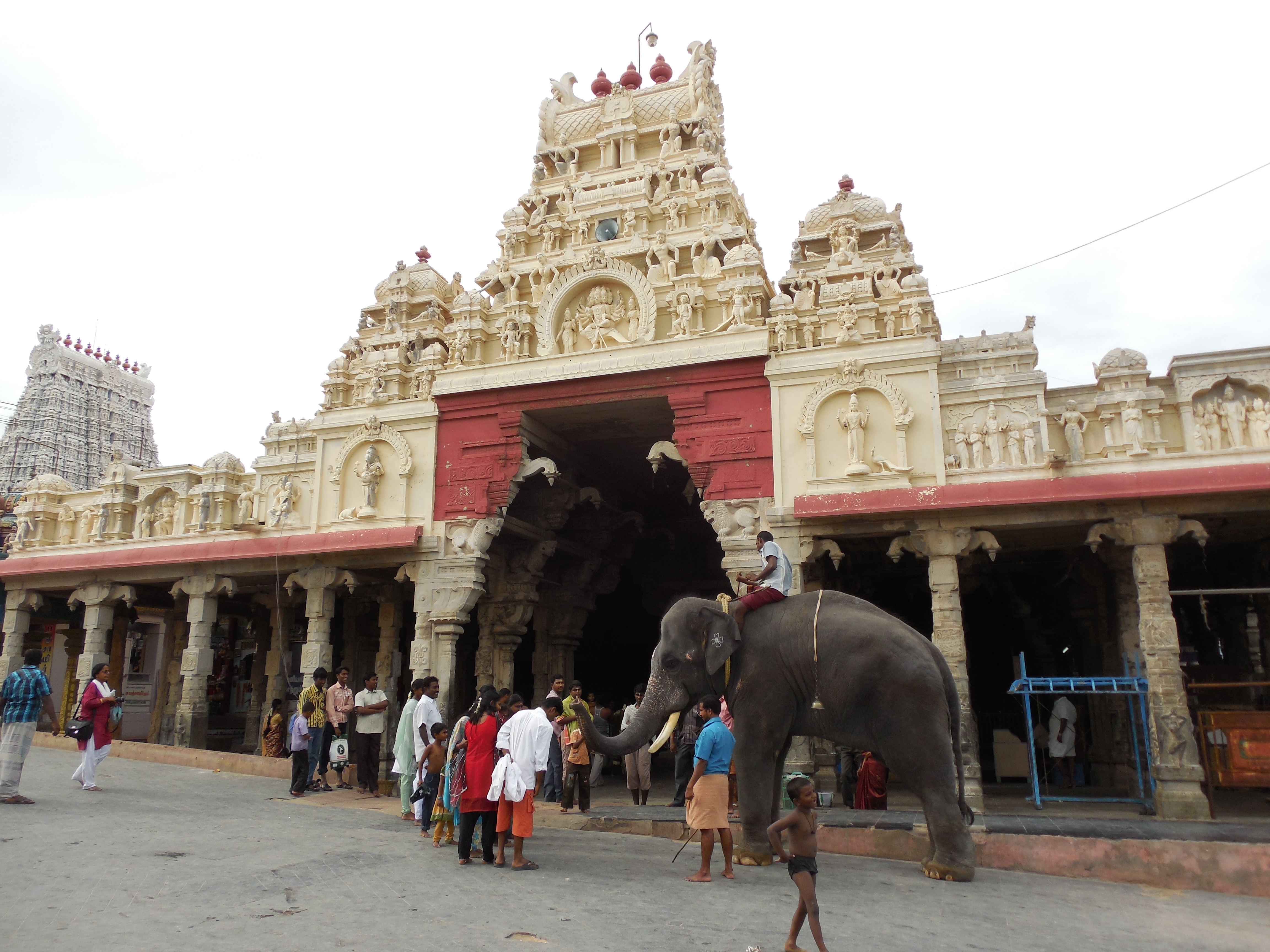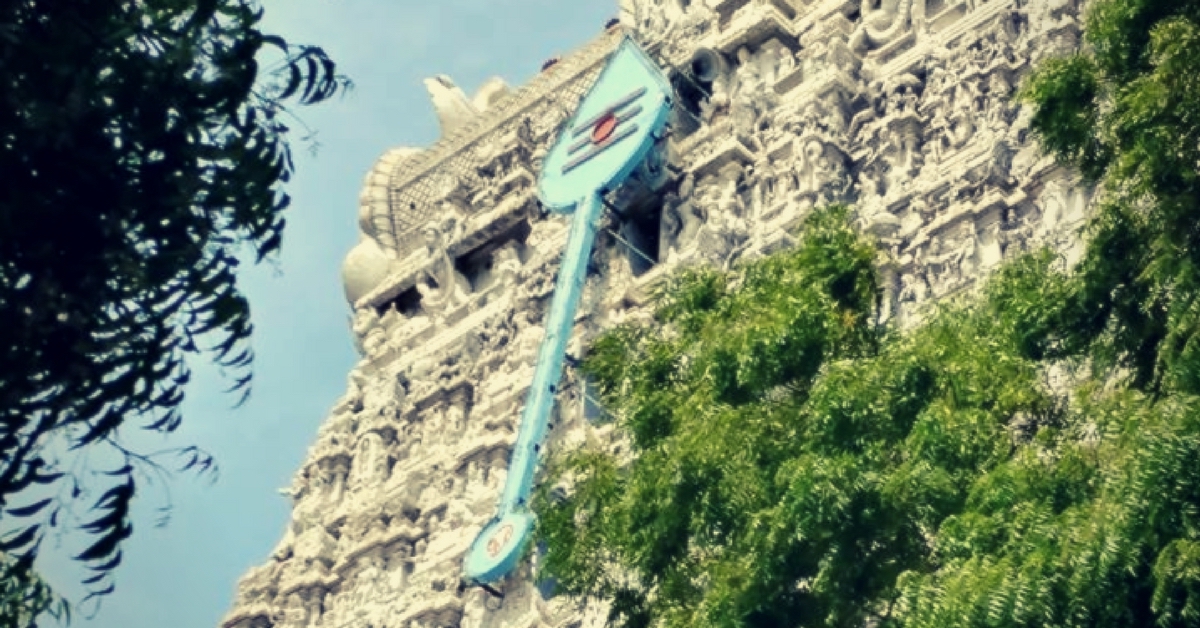Situated on the shores of the Bay of Bengal, the ancient temple of Thiruchendur is one of the six prime shrines in India where the Hindu god of war Murugan or Kartikeya is revered as the principal deity.
Amongst the largest temple complexes in South India, it has a lofty entrance tower measuring up to 140 feet!
The 2000-year-old Murugan temple is also amidst one of the few religious sites in the country to have been accredited with ISO certification and finds references in ancient texts like Purananuru, Silappadikaram, Tirumurugatrupadai, Adi Sankarar Sri Subramanya Bhujangam, Kanda Puranam, Tiruppukazh, etc.
The present temple rests at the site believed to have been chosen by Murugan to worship his father, Lord Shiva, following the intense battle of Surasamharam.

Even the manner in which the sanctum sanctorum’s residing deity has been modelled lays testimony to this myth with the idol chiselled in a worshipping posture. Like most ancient structures in India that come along with a string of seemingly unbelievable tales and miracles, the Thiruchendur temple too has its share of implausible events that make it a legend.
One such story goes back all the way to the time when European conquests of Asian countries were in vogue. Ancient India was touted as a golden bird with its widespread trade network reaching as far as Egypt and Greece.
Hence most conquests were flagged off with the sole intention of accumulating as much wealth as they could plunder upon.
So when an entourage of Dutch mercenaries stumbled upon the temple in Thiruchendur in 17th century AD, they looted everything that they could lay their thieving hands upon, even the panchaloha (five-metal alloy) idol of Murugan, which they’d foolishly assumed of being entirely made of gold.
With huge caches of looted treasures, the soldiers soon embarked on their ships to set sail for their homeland.
But little did the soldiers know that a greater conspiracy was in the making that would not let them cross the Indian Ocean.
Having crossed only a few nautical miles from the shore, the ship fell prey to a storm so daunting that the sailors began to believe that it was the wrath of the local god from the temple they had looted, which must have induced the thunderstorm. Petrified out of their minds, they decide to heave the idol into the ocean.
According to the tale, the ominous demeanour that the ocean and skies had embodied only a second ago mysteriously vanished the moment the statue touched the waters, much to the soldiers’ astonishment. As the shaken soldiers restarted their journey, the idol sank and rested somewhere into the depths of the ocean.
The story doesn’t end here. Apparently, one of the priests who performed the sacerdotal duties in the shrine had a dream in which Murugan urged the man to bring back the idol from the clutches of the ocean.
Upon seeing the devotee’s struggle with the request of finding an idol that could be anywhere in the ocean, Murugan explained that few miles from the coast, he would find a lemon floating in the waters and if he swam deeper, he would find the idol.
As per the fantastic story, the priest, accompanied by a group of fishermen, did find a lemon floating in the ocean and as Murugan had proclaimed in the man’s dream, the statue was found resting at the very location in the ocean bed.
It is the same legendary idol that now rests peacefully in the temple chambers and welcomes thousands of pilgrims and worshippers year after year.
The Thiruchendur temple once again scripted its name in the annals of history for guarding devotees against the onslaught of the lethal Tsunami waves that quite literally washed away the shores of the Indian subcontinent in 2004.
While many coastal towns in Tamil Nadu didn’t stand even a chance in withstanding the wrath of the sea, the entire temple complex – situated just 50 metres from the coast – was remarkably left untouched and every person within the sanctum sanctorum lived to tell the tale.
Even today, the incident continues to baffle even the best of sceptics, while believers hail Murugan for being the merciful guardian of not just his abode but the devotees as well.
Be it greed-driven plundering or natural disasters, the Murugan temple of Thiruchendur has transcended every onslaught that had fallen on its way and continues to watch over its subjects like a solitary custodian.
Like this story? Or have something to share?
Write to us: contact@thebetterindia.com
Connect with us on Facebook and Twitter.
NEW: Click here to get positive news on WhatsApp!
If you found our stories insightful, informative, or even just enjoyable, we invite you to consider making a voluntary payment to support the work we do at The Better India. Your contribution helps us continue producing quality content that educates, inspires, and drives positive change.
Choose one of the payment options below for your contribution-
By paying for the stories you value, you directly contribute to sustaining our efforts focused on making a difference in the world. Together, let's ensure that impactful stories continue to be told and shared, enriching lives and communities alike.
Thank you for your support. Here are some frequently asked questions you might find helpful to know why you are contributing?

